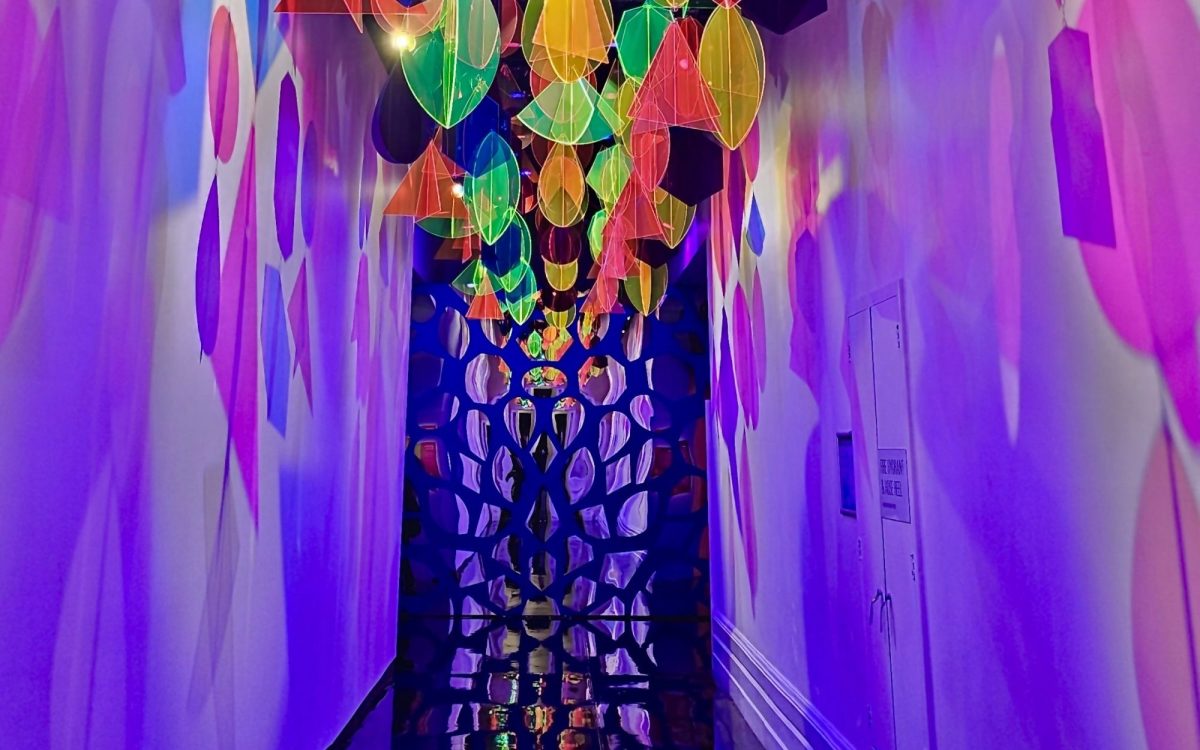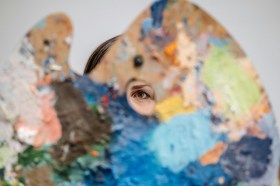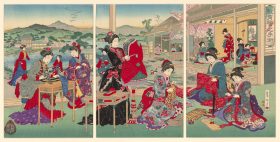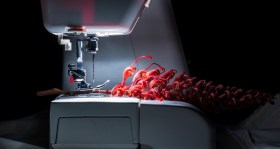Sometimes an art critic’s opinion doesn’t matter, but if you’re reading this then you probably want to know this one. Immigration Museum’s latest exhibition, Joy, featuring seven installation commissions from Victoria-based artists, is not for this writer, which is fine. But these artists have made their names in contemporary art, and so will this matter to the visitors who actually enjoy the show? Probably not.
Off the bat, the exhibition design for Joy is very kitsch, with saturated purples, pinks and blues dominating the entrance hallway. Spencer Harrison’s shiny plastics mobiles are added overhead for extra bling. It’s intended for visitor engagement in the sense of whipping out their phones and striking a pose.
This is furthered in the next installation space with Joy Generator by Nixi Killick, featuring its signature psychedelic maximalism and patterns that recall morphing cells or lava. Just looking at the photos, this reviewer wrongly believed that the installation could spin, but discovered on-site that the interactive component relies on augmented reality through a separate downloadable app. After pointing the phone lens at a dozen of the insects featured in the installation, one sprang to life in a series of twirls.
It’s clear that Joy prioritises fun and photo ops over a “serious” appreciation of art, but knowing the practices of some of these artists, it’s hard not to feel that things have been diluted or, rather, injected with serotonin. It’s tacky to the extent that Elyas Alavi and Sher Ali’s mural, In search of the Simurgh looks like Etsy wallpaper, rather than being a hand-painted work, surrounded by printed reproductions of the mythological Persian bird in ancient visual depictions. Even Alavi’s neons can’t escape this fate, which is a shame consideringhow strikingly presented they were in the 2023 TarraWarra Biennial.
The only room that sits comfortably in Joy without playing tug-of-war between an art exhibition and the experience economy is Callum Preston’s Video Land, a replica of a 90s video rental store that is accurate down to a tee, and where visitors can take some time to marvel at its technical execution.
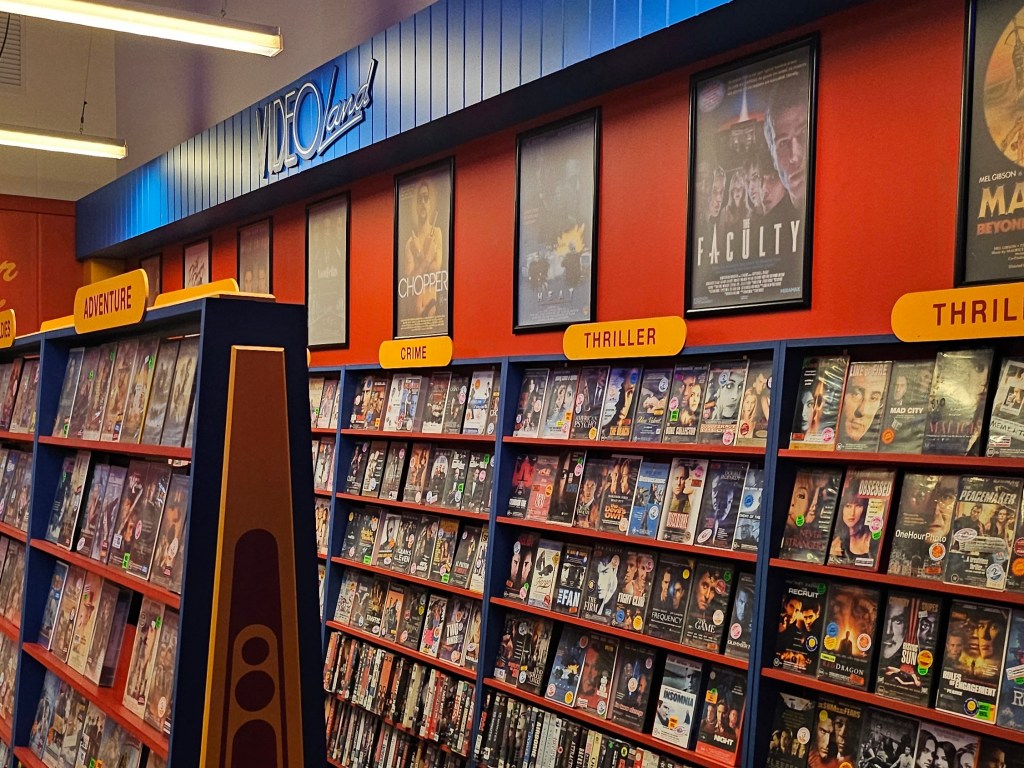
Nadia Hernández’s Que te puedo decir, así son las cosas is also lucky to bypass these woes, with collage murals installed in the Immigration Museum’s foyer corridor, which are seen by visitors before they make their way up into the main exhibition.
Read: Exhibition review: Dana Awartani, Samstag Museum of Art, Adelaide
With a giant plushie bunny and cushions aplenty, kids run around Joy… with joy. Move up the age range a little and teenagers tend to get pretty ruthless about overly bright walls and installations that try too hard to cheer us up.
So if you’re visiting Joy with a child? Great. If you’re going in order to feel like a child again? Great. If you’re going for the art? Well, bad luck.
Joy is showing at Immigration Museum until until 25 August 2025; tickets for museum entry apply.
